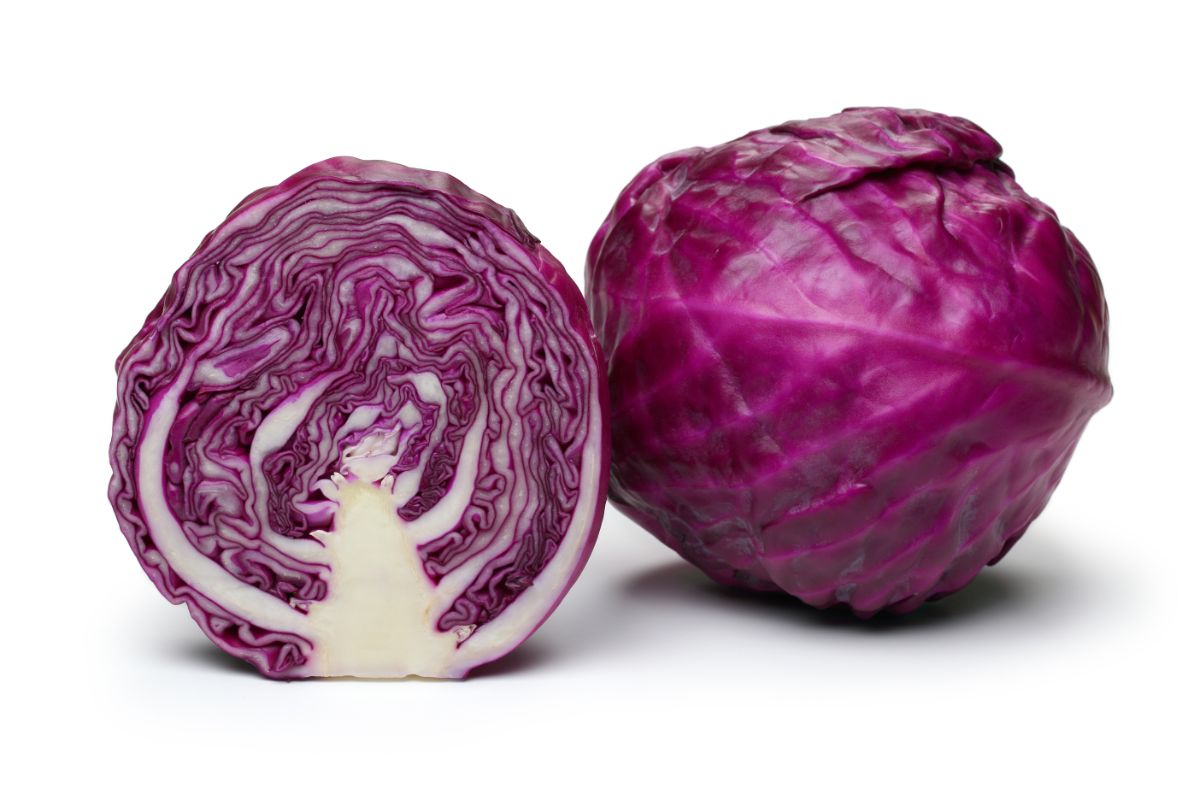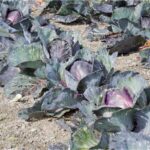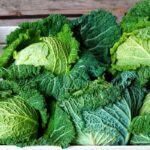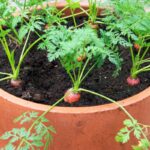Red cabbage, known for its strikingly rich hue and robust flavor, graces many gardens with its vibrant presence.
It’s not just a delight to the eyes; this vegetable is packed with nutrition, making it a favorite among health-conscious gardeners and chefs alike.
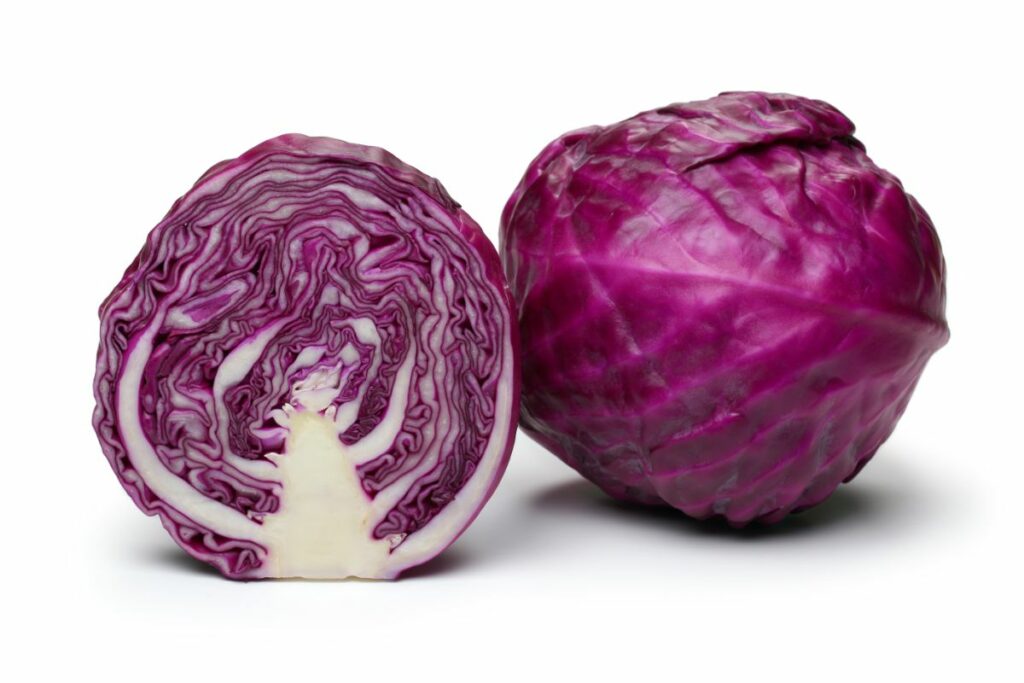
However, the key to enjoying the best of red cabbage lies in understanding the right time to harvest.
Below is an in-depth guide to help you determine the ideal time to harvest your cabbages, ensuring that every bite is full of flavor and nutritional goodness.
Understanding The Growth Cycle Of Red Cabbages
The maturation of red cabbage can primarily be gauged by the time that has elapsed since its planting.
Typically, when grown from transplants, most varieties of red cabbage reach maturity in about 80 to 100 days.
If you’ve opted to grow them directly from seeds, expect them to be ready for harvest in around 85 to 120 days.
These numbers, however, are approximations.
The specific variety of red cabbage you’ve planted might have its own unique maturation timeline, which is why it’s essential to refer back to the information provided on the seed packet or plant tag.
How To Know When Your Red Cabbages Are Ready To Harvest
There are a few things to look at to see if your red cabbages are ready for harvesting – let’s look at them below:
Assessing The Physical Attributes
One of the most tangible indications that your red cabbage is ready for harvest is its size and the feel of the head.
A mature cabbage will typically boast a firm and dense head, measuring between 4 to 10 inches in diameter.
To ascertain its readiness, gently squeeze the head. If it feels solid and compact with no signs of looseness, it is a strong indication of its maturity.
The Importance of Leaf Health and Appearance
The leaves of the red cabbage can also provide significant insights into its readiness for harvest.
As the cabbage matures, you’ll observe that its outer leaves, which were previously hugging the head tightly, will begin to open up slightly.
The deep, vibrant purple or red hue of the leaves is another sign of a healthy, mature cabbage. If you notice that the leaves have started to pale or yellow, it might be an indicator of an aging cabbage or one that’s been compromised by pests or disease.
Stem Strength As A Marker
A closer inspection of the stem can also guide your harvesting decision.
A mature red cabbage will invariably be anchored by a robust and firm stem.
If you find the stem to be pliable or weak, it’s advisable to give your cabbage a bit more time to reach its prime.
Being Weather-Wise When Harvesting Red Cabbages
The temperament of the weather plays a pivotal role in the life cycle of red cabbages.
These plants thrive in cool seasons, and a sudden spike in temperature might force them to bolt.
Bolting is a phase when the plant starts focusing on producing a flower stem, often leading the cabbage head to split.
On the other hand, if a frost is anticipated, it’s crucial to harvest the red cabbage before the first severe frost sets in, as it can compromise the vegetable’s quality.
How Soil Moisture Can Affect Your Harvest
Consistent soil moisture is crucial for the well-being of red cabbage.
Fluctuations in soil hydration levels can lead to problems.
For instance, if the soil goes from being extremely dry to suddenly wet, there’s a heightened risk of the cabbage head splitting.
Upon observing such splitting, it’s imperative to harvest the cabbage immediately, forestalling the potential threats of rot or pests.
Harvesting Your Red Cabbages
When it comes time to harvest your red cabbage, a careful technique can make a significant difference in preserving its freshness and quality.
Begin by selecting a sharp knife, ensuring clean, precise cuts that minimize damage to the plant.
Locate the base of the cabbage to make your incision, but instead of cutting directly at the base, leave about two inches of the stem attached.
This technique not only aids in preserving the vegetable’s freshness but also provides a convenient handle for transportation and storage.
Remember, the act of harvesting is just as much a craft as growing, so always approach it with care and precision.
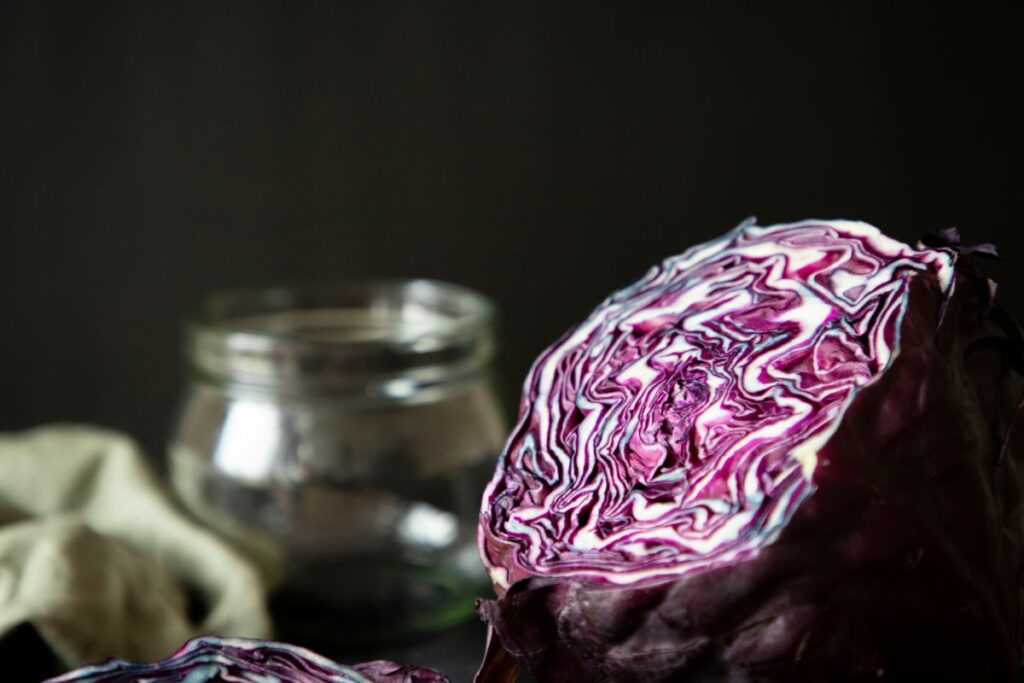
Storing Red Cabbage: Best Practices
After dedicating time and effort to growing and harvesting red cabbages, storing them properly and keeping them fresh is essential.
The way you store your cabbage can significantly impact its texture, flavor, and nutritional value.
Here are some effective storage methods and tips:
1. Refrigeration
Whole Heads: If you plan on using the cabbage within a few weeks, the refrigerator is your best bet. Store the whole head in a perforated plastic bag in the vegetable crisper drawer.
This method can keep red cabbage fresh for 2-3 weeks. Ensure that the outer leaves are intact, as they act as a protective layer for the inner leaves.
Shredded or Cut: Once red cabbage is cut, its shelf life reduces. Store shredded or cut cabbage in an airtight container or resealable plastic bag, eliminating as much air as possible.
Use within a week for optimal freshness.
2. Root Cellaring
If you have a root cellar or a similar cool, humid environment, red cabbage can be stored for several months.
Hang the cabbages by their roots or store them on shelves, ensuring they don’t touch each other to prevent rotting.
3. Freezing
Red cabbage can be frozen for longer storage. However, it’s advisable to blanch it first to preserve its color, flavor, and nutritional value.
To do this, shred or chop the cabbage, blanch for 1-2 minutes in boiling water, cool immediately in ice water, drain, then pack in airtight freezer bags and freeze.
Frozen red cabbage can last for up to 9-12 months.
4. Fermentation And Pickling
For a tangy treat and extended storage, consider fermenting your red cabbage to make sauerkraut or kimchi. Fermented foods also offer additional health benefits, including probiotics.
Alternatively, red cabbage can be pickled using vinegar, salt, and other spices.
Both methods allow for storage periods of several months.
5. Dry Storage
In regions with moderate climates, you can store red cabbage in a cool, dry place like a garage or basement.
Place them on elevated platforms like pallets, ensuring good air circulation and that the heads don’t touch each other.
Check regularly for signs of rotting or pests.
Check For Signs Of Aging
Regardless of the storage method, regularly inspect your stored cabbages for signs of mold, soft spots, or an off odor.
Removing affected cabbages promptly will help prevent the spread of rot to other stored heads.
Final Thoughts
Harvesting red cabbage might seem like a straightforward task, but it demands a harmonious blend of observing the calendar, noting physical changes, and adapting to external conditions.
By meticulously following these guidelines, gardeners can guarantee that they are enjoying their red cabbage at its zenith, both in terms of taste and nutrition.
- Can You Grow Bell Peppers Indoors? A Guide For New Gardeners - November 14, 2023
- Composting Basics: Can You Compost Mushrooms? - November 6, 2023
- A Gardener’s Guide To Growing Carrots In Raised Beds - November 1, 2023

